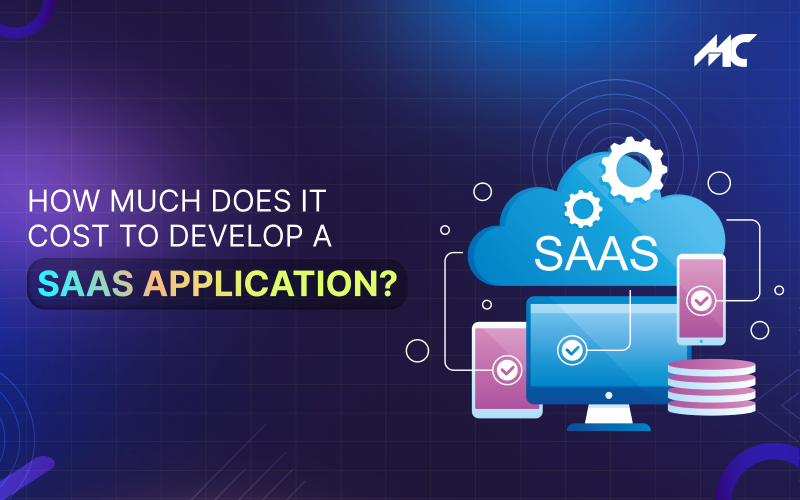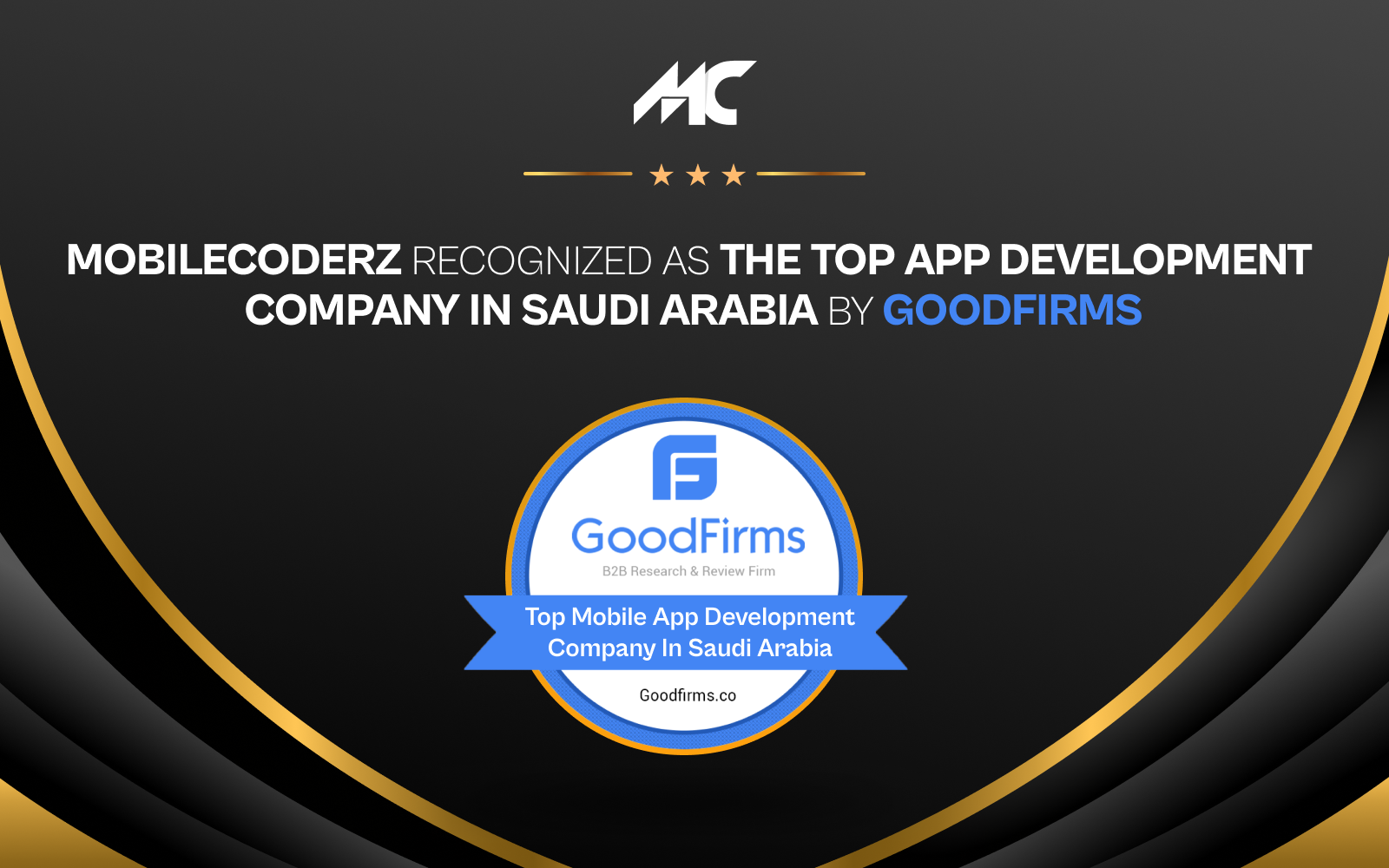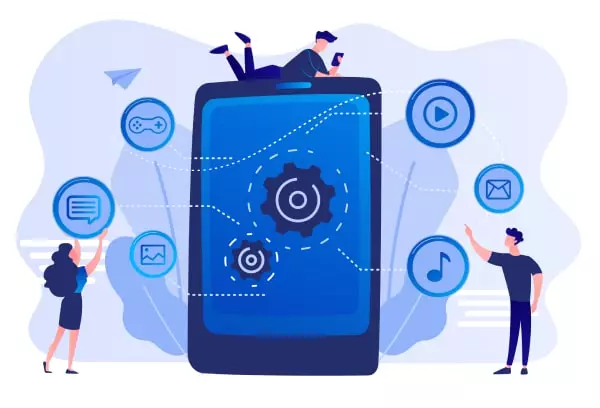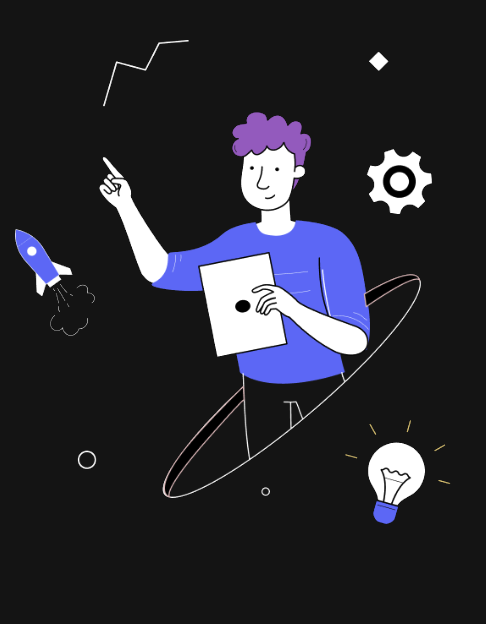Mobile App Development Process -From Ideation to Execution
There are about 1.5 million apps available on Apple’s app store and Google play store regarding games, e-commerce, social networks, etc. According to a recent study about mobile use statistics, out of all the time spent on digital media, people spent over half of the time on mobile apps, and on average, a consumer spent almost 35 hours a month along with the installation of about 30 apps on his device. This is indeed a great number.
These studies absolutely favor a rich market for mobile app development and if interested, one should not refrain oneself from building these apps. The basic goal behind developing an app is to attract a lot of consumers and thereby, making money out of it. But with so many apps available, it is highly important to understand how the app which you have developed will fit into the market niche so that more and more consumers use it. There are different types of apps that can be developed ranging from games, social networks, and whatnot.
So, after you have researched which type of app you desire to develop, you can go ahead with the mobile app development process.
MobileCoderz has successfully developed over 100+apps for iPhone and Android which are critically acclaimed and the apps developed by us have been featured in the Google App Store as well as the iOS app store from where they had been downloaded over more than one million times. In other words, the point to concentrate on is that if the development process, which is employed, follows all the speculations and guidelines of the allied platform, one can establish a great customer base all over the globe.
Although, each app is different from others, yet, the basic methodology of the strategic mobile app development process is more or less the same.
Let’s have a look at the different phases of the mobile app development process that we follow at MobileCoderz. To have a better understanding, the mobile app development lifecycle can be segregated into 8 phases. We will discuss it one by one.
1. Research
Everything starts with an idea. The first and foremost thing is to refine your idea into a firm basis for the application. Before entering the design and mobile app development process, it is crucial to research your target audience and the features that can make your app outstanding. The initial analysis includes demographics, behavioral patterns, and goals of the user. In this phase, the spadework for the whole development process is laid down. It is highly recommended to perform adequate research and discussions before moving on to the next step. This step lays the foundation of the whole process and the enthusiastic team of MobileCoderz never lets you down as it goes with the development only after meticulous market research and a vigorous study of the proposed business model.
2. Wireframing
A wireframe is a guide that represents the skeletal framework of your app. This step includes documentation and building a framework for the app. Drawing detailed sketches of the app in mind helps to best accomplish the process. Sketching helps to arrange the design components in a fruitful manner. This step helps to overcome any technical limitation which can occur in building the backend for the mobile app development process. At this stage, the framework created by our team helps to develop a clear understanding of how the proposed features and ideas will fuse together into a functional app. We also create a storyboard for a better demonstration of the relationship between each screen and how the users will navigate through the app. This truly clarifies the picture in mind and assists us in striving towards the goal.
3. Technical Feasibility Assessment
After attaining an understanding of the app visuals through the wireframe, it is needed to access whether the application is technically feasible or not. For this, the app developers need access to public data through public API s sourcing. If the original functionality of the app is not feasible then you might have a different idea for the app. We are extremely proud to have the best of a team of app developers that accomplish the task to utter satisfaction.
4. Designing
In this phase of the mobile app development process, the user experience (UX) designer architects the interaction between design elements and the User interface (UI) designer builds the look and feel of the app. This is a multistep process with many reviews. Once the blueprint and visual directions are achieved, you could judge the movement, flow, and feel of the app. It is advised to make multiple variants of the screen by playing around with navigation layout, buttons, and other visual elements. This enhances the probability of UX design is original. Our versatile team of UI and UX designers has the right skills to design your idea into an innovative reality and have already proved their excellence by designing so many apps which are available in the stores.
5. Development
Once a design is ready, we develop a working prototype that validates the functionality, assumptions and also helps in understanding the scope of work. The development phase progresses through a prescribed set of steps. In the first step, the core functionality of the app is developed but not tested. This is followed by the second step in which much of the functionality proposed is incorporated. Here, the app is lightly tested and bugs are fixed, if found. But the app still is not totally bug-free and some issues could still be present. In this step itself, the app is released to some external users for more testing. On the basis of the feedback obtained from the users, all the bugs are fixed. Now the app advances towards the testing and deployment phase.
At MobileCoderz, we make use of an iterative and interactive approach called Agile methodology. A large application is broken down into smaller modules, and agile methodology is applied to each of the modules. Each module is then provided to an independent development team acting as a mini-project to them. This methodology involves constant communication within and between groups; constant interaction, both in the project development environment and between customer and contractor providing maximum flexibility of the design process. So, if the user requirements change continuously, it bears virtually no effect on both the time spent as well as app marketing. So, whenever changes are required it is the task of only one of the teams, thereby, not slowing down the work on the project as a whole.
6. Testing
In mobile app development, MobileCoderz advises to start testing at the earliest possible and that too often. This is a highly cost-effective strategy as once you move farther into the development cycle, it becomes costlier to fix bugs.
Testing is done for usability, compatibility, security, and performance. In this step, User acceptance testing is done to find out whether the app works for the intended users or not. For this, the app is being given to a few people in the targeted audience for use and then they are being asked germane questions. The obtained feedback helps to improvise the app and the process is repeated again until the application passes the user acceptance test. After this, we make the developed app available for a beta test to ensure desired performance of the app in real world. MobileCoderz possesses round-the-clock support ensuring that bugs are dealt with quickly and effectively. Once it is done, it implies the app is ready for deployment.
7. Deployment
After fixing all the bugs and issues, the app moves to an important phase which is the deployment phase. Now, the app is absolutely ready for release. It is done through a formal launch. Different policies are being followed by every application store for application launch, and therefore our plan of this deployment phase is aligned according to the app store. At MobileCoderz, we can give you a 100 % clearance guarantee with the App Store and play store. But this mobile app development process doesn’t end here. The app needs to be maintained properly for user satisfaction.
8. Support and Maintenance
This phase is the last but not the least.
Now, this is the time when the app reaches the users. Once it gets into the user’s hand, you will start receiving feedback. The feedback is then required to be incorporated into future versions of the app. Every app needs updates and new features. So, actually, once the first version of the app is launched in the market, the development cycle (considering all updates and new features) starts anew all over again.
App development is a long-term commitment. Therefore, we always have an ensured supply of resources beforehand to maintain the product apart from the money invested in building the first version of the app. This is mandatory for developing a user-satisfying mobile app.
This was a brief overview of the strategy for developing a mobile app. I hope this article might help you if you are thinking to develop a mobile app.
Conclusion
If you are seriously considering to develop a mobile app, then surely, you are in the right place. Before developing an app, you will definitely need to choose an organization equipped with an experienced and expert team that can bring your idea to reality along with providing a loyal customer base. Being a top-rated mobile app development company, MobileCoderz can help you in developing an app that can surely boost your business growth as well as providing an edge over competitive apps.
-

 Mobilecoderz Awarded as India’s Best iPhone App Development Company by Clutch
Mobilecoderz Awarded as India’s Best iPhone App Development Company by Clutch -

 How Much Does It Cost to Develop a SaaS Application?
How Much Does It Cost to Develop a SaaS Application? -

 Mobilecoderz recognized as the Top App Development Company in Saudi Arabia by GoodFirms
Mobilecoderz recognized as the Top App Development Company in Saudi Arabia by GoodFirms




